- Home
- Larry McMurtry
Custer Page 4
Custer Read online
Page 4
THE BATTLE OF THE WASHITA was fought on November 27, 1868, and was generally thought to be Custer’s one great victory in the American West. Its greatness, I suppose, depends on how one grades battles.
It got good press, but at the same time alienated the officer corps of the U.S. Army against Custer permanently; the reason for their hatred and mistrust was the abandonment of Major Joel Elliott and his eighteen men to a cruel fate. Custer could have at least gone and had a look, but he didn’t, though Major Elliott and his men were slaughtered just two miles from the main body of soldiers. Their severely mutilated bodies were easily in sight of the main body of troops. Custer later gave his military patron a tour of this then famous battlefield. That no one had attempted to recover the bodies of, after all, American soldiers was another indication, if one were needed, of Custer’s callousness. All the men, including Major Elliott, had their penises cut off, that being an old staple of primitive warfare.
The Washita is a small river that runs through the eastern part of the Texas Panhandle and on into what is now Oklahoma. The encampment that Custer attacked belonged to Black Kettle, the famous peace-loving Cheyenne leader. When Custer’s soldiers came, Black Kettle managed to get on a horse, with his wife, Medicine Woman, behind him, but bullets soon cut them down. It is said that they lay in the icy river all night but if so they didn’t feel the cold. The Washita is little more than a creek.
A fact recorded by some historians but not by others is that Black Kettle and the other Cheyenne were in fact on their assigned reservation. Black Kettle, to the end, tried to play by the white man’s rules, although they saw the railroads advancing and their food source, the buffalo, diminishing.
More quickly than anyone would have thought possible the great herds were diminishing. By the time of the Washita battle whole trains full of hunters crossed the prairies. Very quickly where there had been millions there were only remnant herds. Hunters from Chicago in private cars didn’t even bother to step out of the trains: they shot through the windows. Fewer and fewer buffalo were left.
In time the great Comanche leader Quanah Parker, on a visit to New York, bought ten buffalo from the Bronx Zoo and started the Wichita Mountain herd. More recently the mogul Ted Turner has done much to bring the buffalo back to the plains in significant numbers. In large measure, when Black Kettle and his tough wife died, the world they knew died with them.
THE BATTLE OF THE WASHITA.
CUSTER THE MYTH, AS OPPOSED to the man, was the result of two battles: the Washita and the Little Bighorn. Without those two conflicts he would be remembered, if at all, as an inspired young cavalry officer in the Civil War.
His response to both battles reveals his main shortcomings as a fighting leader; most important, perhaps, was his indifference to resonance. Even in his Civil War days he seldom bothered with it, which put his company in peril more than once. In several cases, fortunately, his instincts pulled him through. Like many football coaches Custer firmly believed that the best defense was a good offense.
CUSTER ATTACKS BLACK KETTLE’S CAMP.
A considerable dog pack accompanied the 7th Cavalry; once the time had come to attack the Cheyenne encampment these dogs had to be killed, lest their barking alert the Cheyenne. Two of Custer’s own dogs had to be killed but the stag hound Blucher, who wanted to be Libbie’s lapdog, was left at home.
On the Washita as at the Little Bighorn Custer chose to divide his forces. The three groups came to Black Kettle’s camp just at dawn. The men waited, cloaked in a dense ground mist; then the morning star shone with unusual brilliance—so brilliant was it that some thought it might be a rocket. (Fireworks were sometimes sold to the Indians by itinerant traders.) The star shone so brightly that Custer, fearing discovery, ordered the charge, and it worked, though this time he wasn’t opposed by thousands of Indians.
The band—he always had a band—struck up the popular “Garry Owen,” a tune that Custer could never get enough of. The glorious 7th went to work: routing the astonished Cheyenne did not take long. When the fighting ended and the bodies counted there were 103 dead, of which only eleven were full-grown fighting men.
Had Custer had any clear idea as to how many Cheyenne were actually in the area, he probably would have been more prudent. Captured goods were abundant: 573 blankets, for example, and 241 saddles. They took fifty-three captive women, including the lovely Mo-nah-se-tah, of whom more later. The women, the scouts, and the officers were all allowed to choose mounts from the extensive Cheyenne horse herd; when the choices were made the rest of the Cheyenne horse herd was killed, a tactical precaution that Crook used in Montana and Mackenzie used in Texas. The latter killed 1,400 horses in the Palo Duro canyon, effectively ending the Red River War.
Custer had a number of Osage scouts and two white scouts, one named Corbin and a scruffy renegade from California named Joe. The latter favored mules over horses, as did, on occasion, Buffalo Bill Cody. On one occasion Cody guided Custer from one Kansas fort to another and had to put up with much abuse of the mule he was riding, although in the end Custer had to admit that Cody’s mule kept up very well with his own thoroughbred.
When Custer brought in his captives and his troops he showed a few threatrical touches himself. He put the Osage scouts first and arranged the captives as if he were conducting a fashion show.
Meanwhile, in another part of Kansas, Hancock made himself even less liked among the tribes by starting a tremendous prairie fire at a depot called Pawnee Fork. A couple of days later three railroad workers were captured and disemboweled, a punishment that crops up frequently in accounts of the brutal conflicts of the time. One woman worker with a baby found herself surrounded; she picked up a knife and with one swoop gutted the baby and plunged the knife into her own heart.
CUSTER PARLAYS WITH KIOWA CHIEFS, OKLAHOMA.
Custer’s studied entry into Fort Riley was spoiled by the fact that nearly everybody under his command hated him—the officers in a solid body.
Custer was obliged to toot his own horn after the Washita. Only Sheridan seemed fully pleased, and Sheridan was a sucker for Custer.
Not long after the battle, a piece appeared in the St. Louis Democrat criticizing the handling of troops; the piece also mentioned the abandonment of Major Elliott.
In a fury Custer called all his officers together and declared that he would horsewhip the man who wrote the piece. Our old friend Captain Benteen asked to see the text and then frankly admitted that he was the author. He said he was ready to step forward and receive his whipping.
Custer had not expected the culprit to be in the room. It put him in an awkward position and caused him to stammer. He looked embarrassed, as indeed he was, and merely told Benteen that he would see him again.
Indeed, he did see him again, on the morning of the Little Bighorn and lots of times in between.
FREDERICK BENTEEN.
AS I MENTIONED EARLIER, ONE of the captives Custer brought to Fort Riley from the Washita was the very comely Cheyenne girl whose name is rendered in various ways, my choice being Mo-nah-se-tah, described by Custer as “being among the aristocracy,” certainly an odd choice of words to describe a young native woman. In Cheyenne terms it is hard to say what exactly was aristocratic about the girl. Maybe her husband was rich—he is said to have paid an extraordinary bride price for her, though this would not make her an aristocrat.
Though Custer spoke sloppily here, it is clear that the girl was exceptional. When she tired of her husband she divorced him in a painful way: by shooting him in the kneecap.
This was effective, but it still didn’t mean that the Cheyenne had a class system of the sort that suggests aristocracy as we know aristocracy. That she was no one to take lightly is clear—even Libbie Custer knew it. Libbie points out that shooting a husband in the kneecap is a terrible thing to do to a warrior whose status depends on mobility.
Libbie says this in Following the Guidon, where she allows herself to reflect on her own complicated feeling
s toward Mo-nah-se-tah:
The birth of her baby after her capture, her high position . . . made me anxious to see her, and yet, even when the soft eyes smiled on me, I instantly remembered how they must have flashed in anger when she suddenly drew the pistol from under her blanket and did her husband the greatest injury next to death that can happen to an active warrior. Nor could I help feeling that with a swift movement she would produce a hidden weapon, and, by stabbing the wife of the white chief who had captured her injure him in what she believed would be the most terrible way.
But then Libbie lets herself be disarmed by Mo-nah-se-tah’s baby, born shortly after the Cheyenne girl arrived at the fort. That her husband thought so highly of the girl must have irked Libbie at least a little bit. That she consciously half expected the girl to stab her cuts rather too close to the Freudian bone. She may have been eager to admire Mo-nah-se-tah’s first baby, but what about her second, born at the fort later in the year. This boy, named Yellow Swallow, may have been fathered by Custer; or not. Nor do we know whether Custer and his brothers visited the dread tent-brothels that sprang up near most army camps. Did Armstrong give Libbie a social disease; and if he did was that the cause of the couple’s childlessness? We don’t know the answer to any of the questions, and likely never will. Nothing I know suggests that Custer was wildly prolifigate, though he did some run-of-the-mill philandering from time to time. One can suspect that the months when the childless Libbie had to share Custer with the easily fertile Cheyenne princess were not the happiest of Libbie Custer’s life.
Libbie was not at all pleased when the government suddenly decided that the Peace Party might have a point. From planning to kill them all, the government suddenly wanted to go easy on them, at least until the railroads advanced and the buffalo eliminated.
Custer’s attack on the Washita drove most of the southern tribes out into the vastness of the Llano Estacado—the Staked Plains. Here, along with the Comach and the Kiowa, they felt unassailable: until Mackenzie assailed them.
Custer, who had just routed them, was told to find them and make peace. It was thought that his words might be more smoothly received if he had some women with him, so he took a few, including Mo-nah-se-tah, with him. Probably he had a fling with this young woman; clearly he liked her very much. What became of her son, Yellow Swallow, is also a mystery. If it had not been for Libbie, Custer might have acknowledged him: there was distinguished precedent for such unions. William Clark, of Lewis and Clark, fathered a son on a Shoshone girl and the boy lived to fight at the Little Bighorn, on the Indian side.
But Yellow Swallow vanishes from the record. In those days that often happened.
CERTAIN ASPECTS OF THE CAREER of George Armstrong Custer make you wonder about policy with a capital P. Why would they fight one band of Indians one day and then make peace with that same band tomorrow? And why would they send Custer, a lifelong hothead, on a mission that required patient diplomacy? Patience was surely one of the missing elements in Custer’s complex character.
Nonetheless, that is exactly what the policymakers did.
Before this, though, was Custer’s accidental marriage to Mo-nah-se-tah, which occurred when he placed his hand on her in the Cheyenne camp. It reminds one of Jeffrey Hunter’s accidental marriage in The Searchers. The ever malicious Benteen says that Custer lived with Mo-nah-se-tah during the winter of 1868–69. If so, where was Libbie?
In any case we know that Custer departed for the Staked Plains with the girl and some Osage and Kaw scouts, his mission being to salvage what could be salvaged with the Cheyenne.
Considering what had just happened the wonder is that Custer wasn’t killed. Probably he was chosen for this unpromising mission because Sheridan knew that he had the gall—and the balls—to do it. Custer walked straight into the combined camp of Rock Forehead and Little Robe, both formidable men.
Custer didn’t smoke, but allowed a peace pipe to be thrust upon him. He didn’t like it but he did it, and the Indians followed suit. When Rock Forehead finished his pipe he deliberately brushed ashes across Custer’s boots, a big insult, though it’s possible Custer didn’t know this; or, perhaps he knew it but accepted it because he knew that the alternative would probably be his death.
Rock Forehead then told Custer that if he ever went against the pipe again he would be killed, and all his men as well.
And so it came to pass in 1876. There are many accounts of the mutilations practiced on some 250 of Custer’s soldiers.
LITTLE ROBE.
As all students of Custer know, he himself was not hacked up, though the women of the Sioux and Cheyenne did push their sewing awls through Custer’s eardrums. It is thought that this was done because Custer evidently didn’t hear Rock Forehead’s warning, though he said it very plainly, though not in Custer’s language.
When Rock Forehead came into the reservation, Mo-nah-se-tah joined his band, and that was the last anyone heard of her.
RED CLOUD OFFERS A PEACE PIPE AT THE FORT LARAMIE TREATY SIGNING.
AMERICA LIKES HIGHLY VISIBLE COUPLES. The public likes to think that their heroes—whether presidential, military, or even artistic—somehow manage to have admirable, fun marriages, unlike (usually) their own. There’s Ike and Mamie, Jackie and Jack, LBJ and Lady Bird, Pat and Dick, and, of course, Nancy and Ron. And I’ve already mentioned Jesse Benton Frémont, whose role in her husband’s life was enormous.
Libbie Custer, somewhat in the same mold, was probably the leading professional woman of her time. She tirelessly took up the cudgels against her husband’s many critics.
Supporters of Major Reno were particularly likely to draw down a tirade from Libbie.
Defending the man was one thing, actually living with him quite another. The 1860s ended. The Custers were always highly social. Since they were stationed mainly at Fort Leavenworth, St. Louis was a handy place to get away, where usually they stayed at the Southern Hotel, where one day Libbie snapped; she unloaded on Armstrong, leaving a mass of criticisms on his head. Custer would never forget her “distressing words.” In time he would respond, in a letter quoted by Shirley Leckie in her excellent biography of Libbie. By this time the Custers had been married about six years—they were at the halfway point. In attempting to answer Libbie’s attacks he brings up his own feelings, noting, to begin with, an absence of fervor—that fervor and that joy. He makes his laments, mentioning that her lovemaking had become mechanical, depriving him of the warmth he had become dependent upon.
Then he voices the fear that Libbie will never love him again as she had, though “while I am absent you may think kindly of me and remember much that is good in me, but when I return the spark of distrust which I alone have placed in your mind will be rekindled and little burning words will be the result.” He goes on to say that his love for her is unquenchable, as unquenchable as his life.
We are long accustomed to thinking of Custer entirely in military terms; it requires a shift in focus to think of the hero Long Hair coming to grips with the fact that his wife is slipping away. He probably cheated on Libbie, and he constantly broke promises, but he did seem to love her and he clearly did not want to lose her.
Frederick Benteen, critical as ever, said that Libbie was the coldest woman he ever knew; since he thought Custer was also cold the couple may have been in that respect well mated.
Marriages are notoriously opaque—it is hard to know exactly when Libbie began to distance herself from George. By the 1870s it was observed by many that the couple mostly traveled alone, rather than—as had once been the case—together.
Officially the vice that most distressed Libbie about George was his gambling. He was very fond of faro, and, like most compulsive gamblers, really needed the risk.
Maybe he fought for the same reason: the risk.
Gambling, of course, took him into low company, which may have been what Libbie hated most about her husband’s vice. She knew her husband well enough to know that he would not be likely to put up m
uch resistance to some advance from some beauty of the demimonde.
Army posts in Kansas and elsewhere were notorously plain and usually deadly boring. Flirting was one of the few admissible diversions. Libbie herself made a decision not to flirt, but she could not find it in her heart to criticize those who did.
The Custers, when the 1870s started, were neither more or less happy than most couples in their position. They socialized a lot and traveled when opportunity came their way. After their years on the plains they finally got a quiet posting in Kentucky, close to the racetrack: something for Armstrong to bet on.
All parties, though, knew that the 1870s were merely the calm before the storm. And not even very calm—the Red River War came in the early 1870s and the finale in the middle of the decade.
The buffalo were now being slaughtered by the millions; Custer went back to the plains for a celebrity hunt now and then.
In the councils of the Sioux and the other plains tribes there was dark foreboding. The whites were crossing in ever greater numbers. Red Cloud made his treaty and the three forts vanished from the Bozeman Trail. But General Sherman’s view slowly prevailed: the red man must be killed or securely confined. The general himself was lucky—twice lucky in fact: the first time was in Texas, when the Kiowa could have had him had they been paying closer attention: he passed right in front of a war party that, later in the day, massacred seven teamsters. The second lucky escape was in the newly established Yellowstone Park. He was picnicking with his family and was nearly swept up in the famous retreat of the fighting Nez Perce. Sherman thought the Indians were putting on a show for himself and his family, when in fact they were busily murdering Montanans.

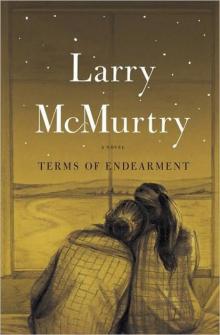 Terms of Endearment
Terms of Endearment Some Can Whistle
Some Can Whistle All My Friends Are Going to Be Strangers
All My Friends Are Going to Be Strangers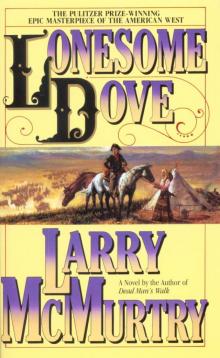 Lonesome Dove
Lonesome Dove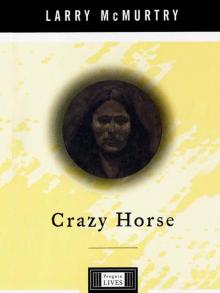 Crazy Horse: A Life
Crazy Horse: A Life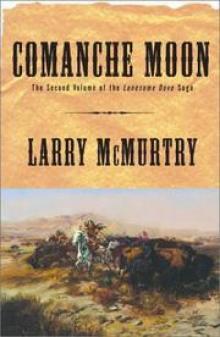 Comanche Moon
Comanche Moon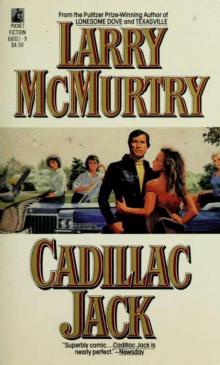 Cadillac Jack
Cadillac Jack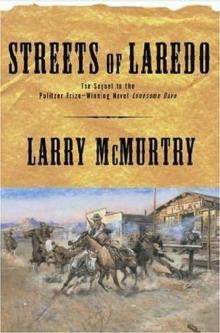 Streets of Laredo
Streets of Laredo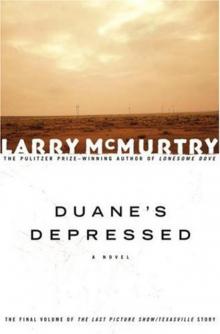 Duane's Depressed
Duane's Depressed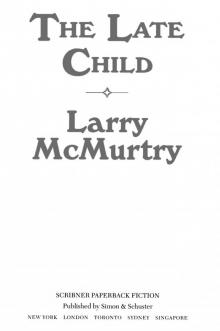 The Late Child
The Late Child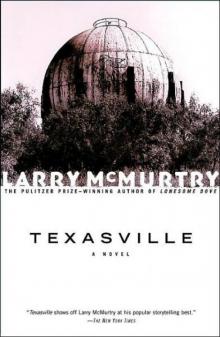 Texasville
Texasville Rhino Ranch
Rhino Ranch Pretty Boy Floyd
Pretty Boy Floyd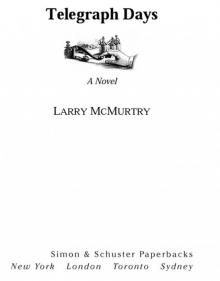 Telegraph Days
Telegraph Days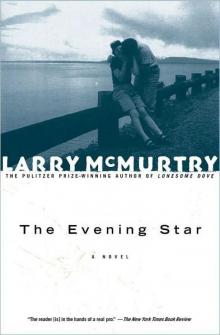 The Evening Star
The Evening Star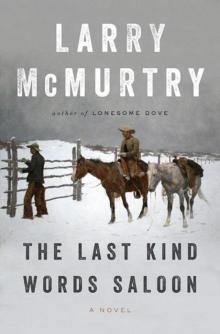 The Last Kind Words Saloon
The Last Kind Words Saloon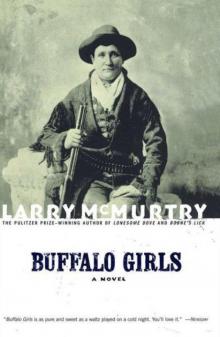 Buffalo Girls
Buffalo Girls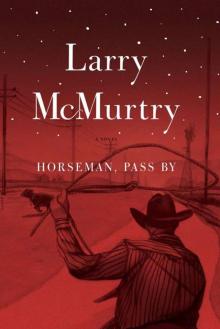 Horseman, Pass By
Horseman, Pass By Boone's Lick
Boone's Lick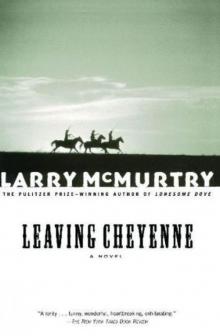 Leaving Cheyenne
Leaving Cheyenne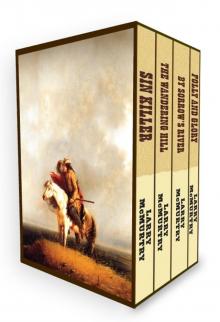 Sin Killer
Sin Killer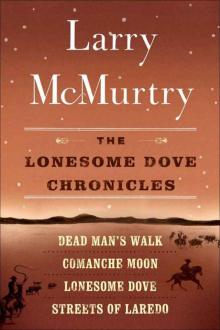 The Lonesome Dove Chronicles (1-4)
The Lonesome Dove Chronicles (1-4)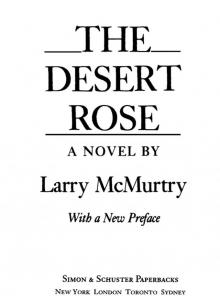 The Desert Rose
The Desert Rose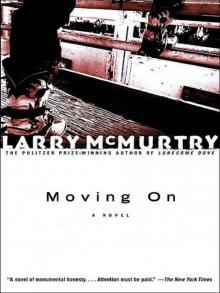 Moving On
Moving On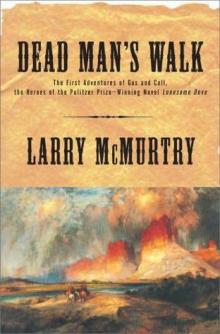 Dead Man's Walk
Dead Man's Walk The Last Picture Show
The Last Picture Show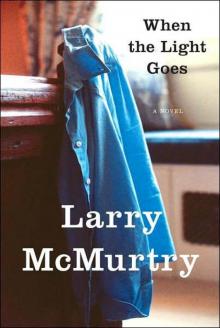 When the Light Goes
When the Light Goes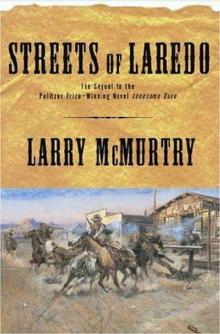 Streets Of Laredo ld-2
Streets Of Laredo ld-2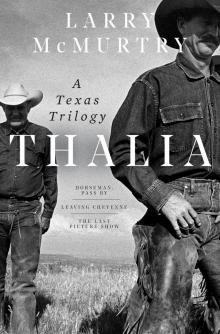 Thalia
Thalia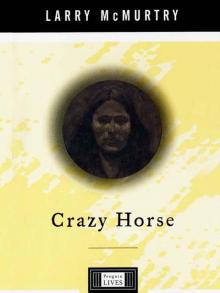 Crazy Horse
Crazy Horse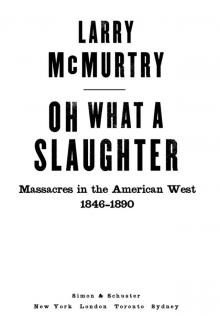 Oh What a Slaughter
Oh What a Slaughter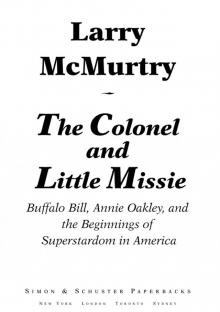 The Colonel and Little Missie
The Colonel and Little Missie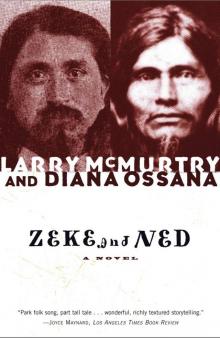 Zeke and Ned
Zeke and Ned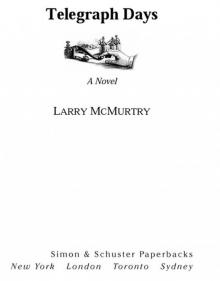 Telegraph Days: A Novel
Telegraph Days: A Novel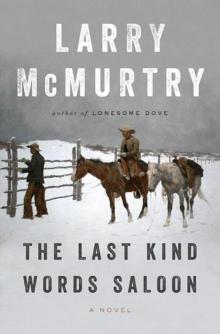 The Last Kind Words Saloon: A Novel
The Last Kind Words Saloon: A Novel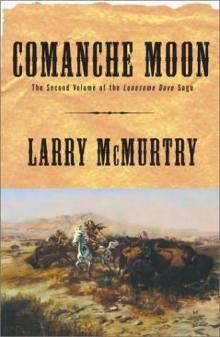 Comanche Moon ld-4
Comanche Moon ld-4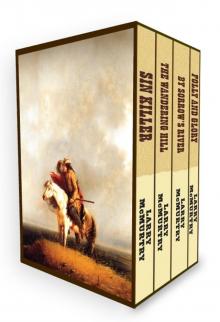 The Berrybender Narratives
The Berrybender Narratives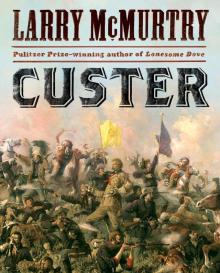 Custer
Custer